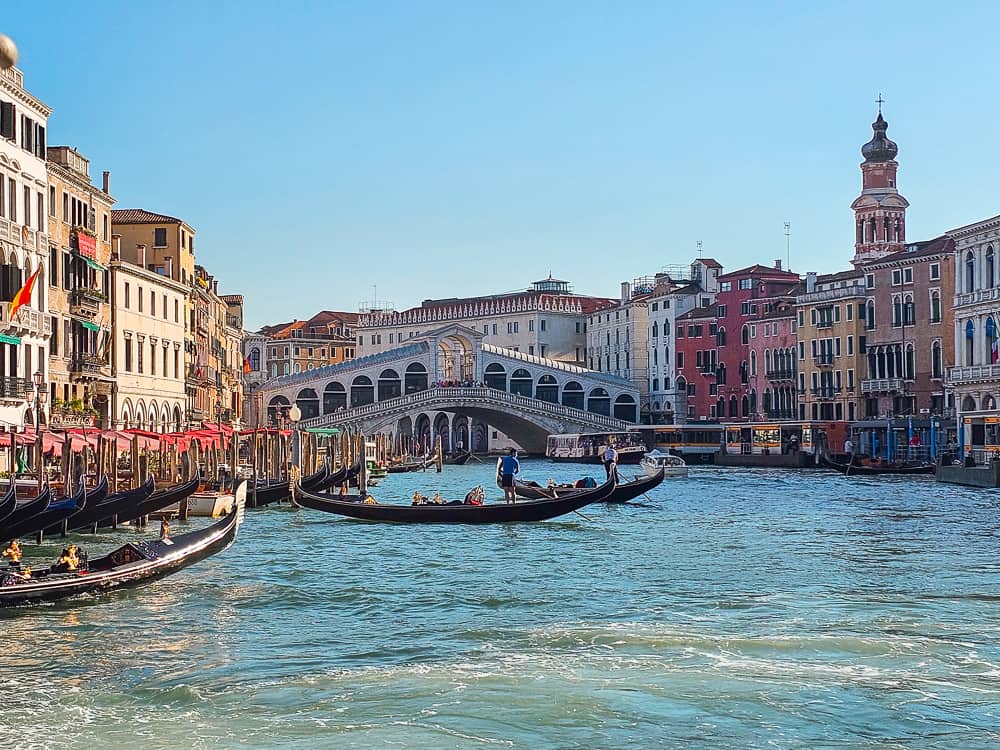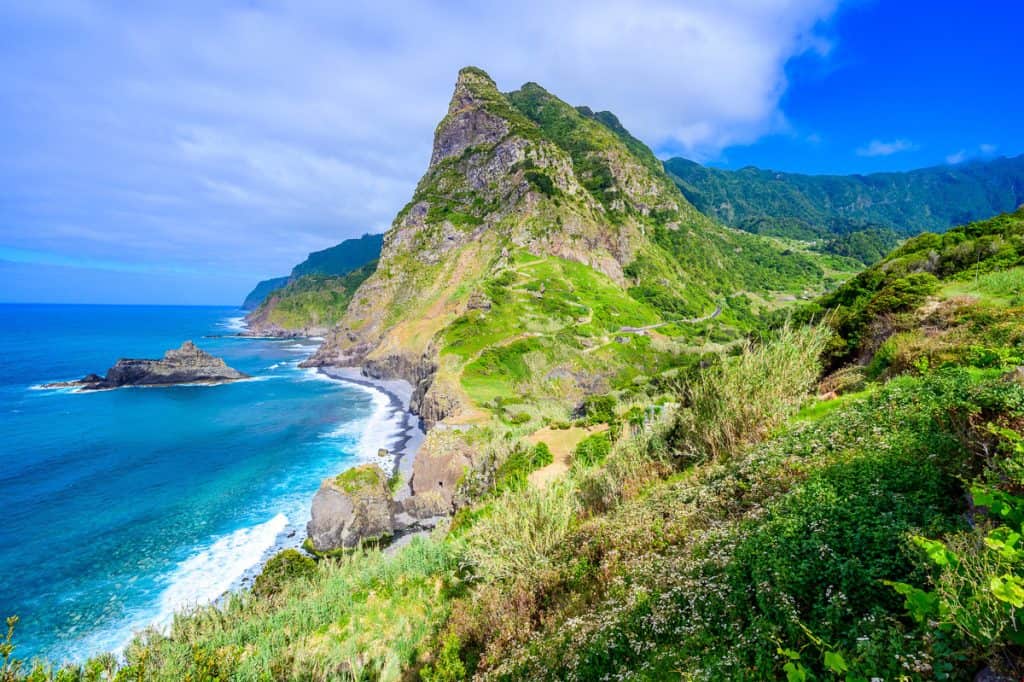Overtourism Is Becoming a Major Problem—This Is How 5 Countries Are Tackling The Issue
In the age of social media and bucket-list travel, the world’s most iconic destinations are facing a growing problem: overtourism. While tourism benefits local economies, its downsides include dramatic increases in rent and housing prices for residents, unmanageable waste, and environmental degradation, among other issues.
From ancient pilgrimage routes to towering peaks and coastal gems, local governments and communities are implementing creative and sometimes controversial strategies to balance tourism and preservation.
Here’s how several countries are addressing the issue:
Japan: Cracking Down on Mount Fuji Crowds

Mount Fuji, a UNESCO World Heritage site and spiritual symbol of Japan, has been facing overwhelming numbers of climbers during the summer months.
To reduce congestion and number of rescues, Japan introduced several measures in 2024 and 2025:
- Daily cap of 4,000 hikers going up to the summit, with an online reservation and payment system
- Mandatory ¥4,000 ($27 USD) climbing fee, applicable to all four of the trails that go to the summit
- Attend a short class on hiking safety and rules as well as pass a test
- Gates on all four trails are closed from 2pm to 3am to prevent late afternoon hikers who want to climb through the night (a safety risk)
These measures come as part of a broader movement across Japan to preserve natural and cultural sites while ensuring tourism remains sustainable.
While hiking Mount Fuji (Japan’s highest peak) is a big draw for tourists, Japan has many other amazing hiking opportunities strewn across its four major islands (and even hundreds of smaller ones).
From the Diasetsuzan Grand Traverse across the northern island of Hokkaido (grab a Sapporo from the source while there) to the 88 Temples of Shikoku Pilgrimage, to any peak in the stunning Japan Alps, there are many trails to explore where you can enjoy beauty without the crowds.
Visit the Japan page of Where to Hike When which provides information on where to hike in Japan, when to hike, hiking guidebooks, maps, apps, guided trips, and so much more.
Italy: Tourist Tax, Restricted Access and Timed Entries
Since the days of the Grand Tour of Europe (when young British men visited major historical sites in Italy starting in the 17th century) Italy has been one of Europe’s top tourist destinations. Now, however, major Italian cities and regions are seeing the effects of overtourism and taking measures to ease the burden in these areas.

Venice has long been ground zero for overtourism, with cruise ships and day-trippers flooding its fragile canals and historic squares. Here are some of the measures that Venice is taking:
- In 2024, the city began a pilot tourist entry fee program, charging €5 for day visitors during peak weekends and holidays in spring and summer.
- Restriction on cruise ship access to the historic center, rerouting large vessels to industrial ports
Another area is the very popular Cinque Terre, a group of picturesque villages on the northwestern coast of Italy visited by millions of visitors each year.

Cinque Terre is implementing:
- Daily cap of 400 walkers on the Via dell’Amore (Path of Love), a short, extremely popular stretch of the Sentiero Azzurro
- Online reservation system and purchase of a Cinque Terre Trekking Card
- One-way system on popular paths during peak periods
- Fines up to €2500 for wearing flip flops on the trails (yes, you read that right)
Florence and the Amalfi Coast (two other extremely popular Italian destinations) have also introduced crowd-control measures, including vehicle restrictions, timed entries, and fines for “bad tourist behavior.”
Spain: Crackdowns in Barcelona and the Balearics
One of the most vocal opponents to overtourism is Spain, with places such as Barcelona, Canary Islands, and Mallorca expressing concern of its affects on residents.
In the past few years and as recently as June 15, 2025, there were coordinated protests in Barcelona, Ibiza, Palma and other cities outside of Spain where thousands came out to voice their displeasure at rising costs of rent and low wages, and overall decrease in quality of life for residents.

In Barcelona, the government is limiting new hotel licenses, cracking down on illegal Airbnbs, and capping tourist group sizes in the Gothic Quarter. The city also raised the tourist tax in 2024 to fund infrastructure and resident-focused improvements.
In the Balearic Islands (Ibiza, Mallorca, Menorca), officials have launched campaigns like “Better in Winter” to spread out visitor numbers, along with stricter rules on alcohol-fueled party tourism and seasonal rental limits to ease pressure on housing markets.
You can visit these popular places in the shoulder season, or you can also explore the many other beautiful regions of Spain that receive less international attention. For example, the stunning Cantabrian coast in northern Spain, or the mountain towns of the Pyrenees.
Visit the Spain page of Where to Hike When, which provides information on where to hike in Spain, when to hike, hiking guidebooks, maps, apps, guided trips, and so much more.
Madeira: Trail Fees and Visitor Caps

The lush island of Madeira has seen a surge in hikers flocking to its famous levada trails and dramatic mountain peaks. To manage this, local authorities have begun requiring fees on all hikes, online reservations for popular trails like Pico do Arieiro to Pico Ruivo, and limiting daily hiker numbers on fragile routes.
They’ve also improved trail maintenance and added more signage and rangers to prevent environmental damage. Madeira is marketing itself as a year-round destination, promoting slower, more immersive travel over quick-hit tourism.
Nepal: New Rules on Everest

Even the world’s tallest mountain is dealing with the downsides of too many visitors. Nepal has faced intense scrutiny over mountaineering traffic jams on Mount Everest, which has led to, among other things, deaths among climbers.
In response, Nepal recently implemented (or plans to implement) several measures. These include:
- Raising the climbing permit cost for foreigners to $15,000 USD (from $11,000 USD)
- Requiring climbers to have previously summited a 7000 m peak in Nepal
- Going with a certified Nepalese guide
- All climbers must wear mandatory tracking devices
Additionally, the government is investing in waste management and rescue services, requiring expeditions to bring down a certain amount of trash or face penalties.
Final Thoughts: The Shift Toward Sustainable Travel
These efforts represent a global shift in how countries manage tourism: not by stopping it, but by reshaping it. Whether through permits, entry caps, taxes, or better education, the goal is to protect the places we love so that future generations can enjoy them too.
As travelers, we have a role to play as well—by traveling responsibly, choosing off-peak seasons, and respecting local cultures and environments. While it can be difficult to stay away from iconic sights, try to visit the lesser-known (but equally awe-inspiring) areas of the country or region you’re visiting.





